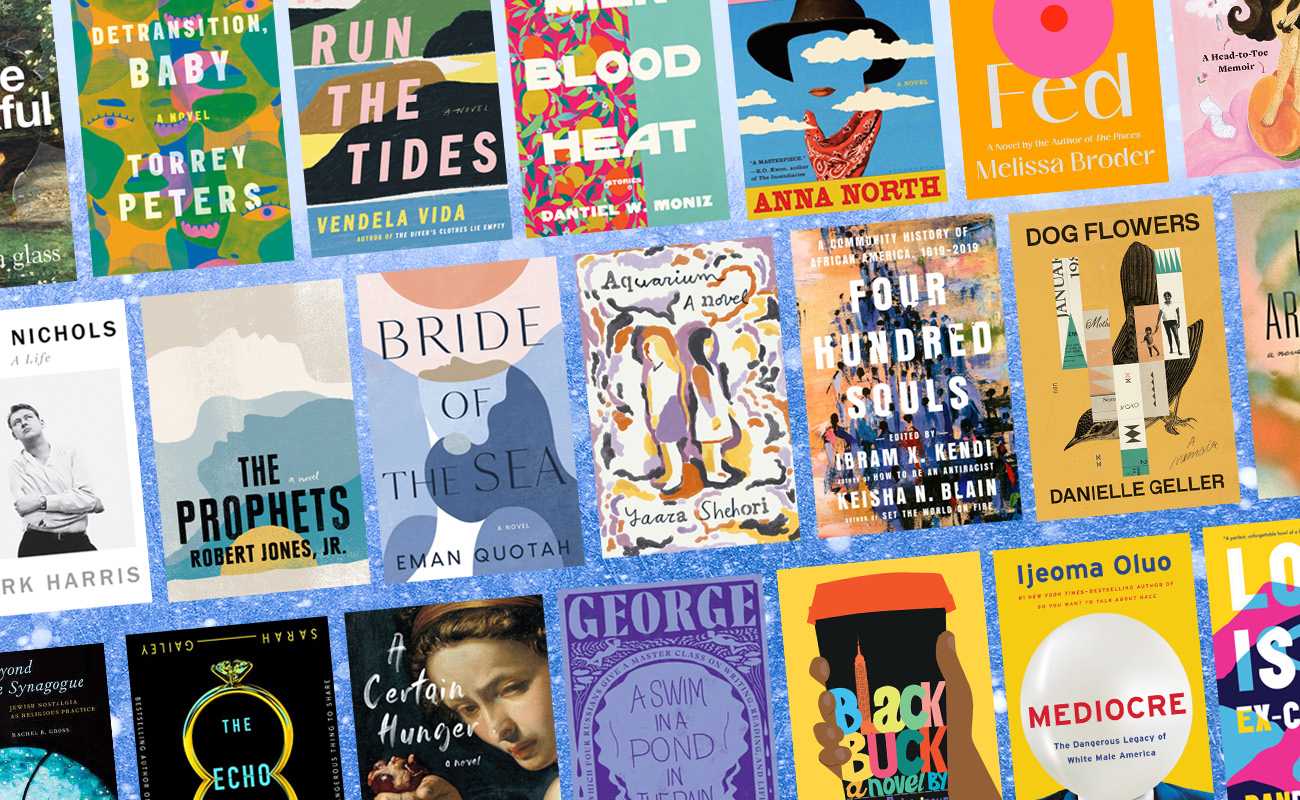I, personally, am ready to curl up with a ton of good books for the entirety of winter while manifesting a 2021 much better than 2020. Thankfully, so many of the books coming out this winter are the perfect books to get lost in. With mysteries and literary fiction debuts and heart-wrenching memoirs and dark satire, there’s something for everyone on this list, I promise.
Also, my seasonal reminder: This list is all shoppable on Bookshop, a platform supporting local bookstores. I’d also like to encourage you to support a local bookstore near you, as independent bookstores are really struggling right now. And, to support all the authors who are releasing books during the pandemic, preorders can make a huge difference (and then it’s like getting a surprise book you totally forgot you ordered several months later!).
One more thing: If you’re looking for books to purchase in time for Hanukkah (books are the best presents, obviously), may we direct you to our favorite books from earlier in 2020, all out now?!
Without further ado, here are our favorite books coming out December 2020, January 2021, and February 2021.
1. Milk Fed by Melissa Broder (February)
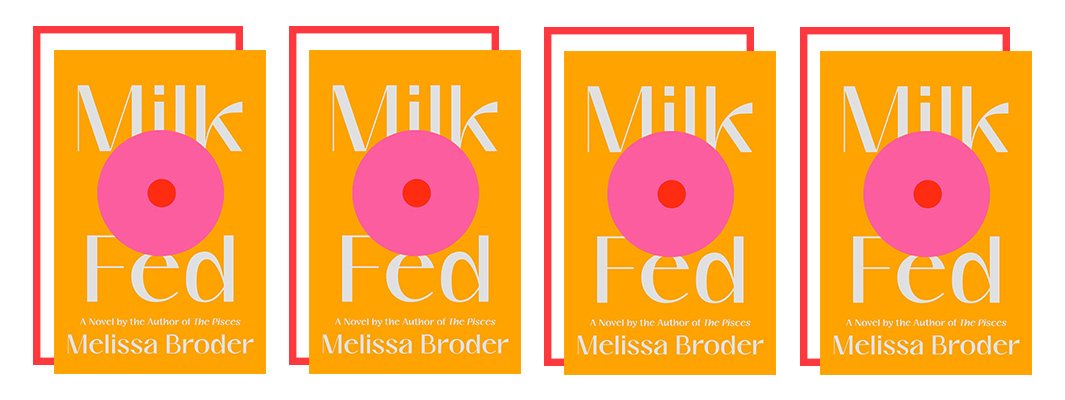
Melissa Broder, the author of The Pisces and So Sad Today, is back with a very Jewish story of Rachel, a 24-year-old struggling comedian living in Los Angeles who obsessively counts calories and has a toxic relationship with her mom. One day, her therapist challenges her to “detox” from communication with her mother — as in not speak to or text her for 90 days. Soon, Rachel meets Miriam, a zaftig (in a positive way) Orthodox Jewish woman who works at a frozen yogurt shop. Miriam slowly gets Rachel to eat, and enjoy, what she’s eating, while Rachel begins to fall for Miriam. There’s also a dreamy subplot about Rabbi Judah Loew ben Bezalel, the famous rabbi of Prague who made a golem. I really don’t want to give any more away, but I was so wrapped up in the story I didn’t want to stop reading. The backdrop of Jewish LA is also worth noting: We get scenes at Miriam’s family’s Shabbat dinners, kosher Chinese restaurants, a talent management agency, a stand-up comedy night… Every detail is so vivid, and Rachel feels so real. Broder has a true talent for conjuring a broken, yet very relatable, woman. The must-read of winter 2021.
Read if you’re into: stories that grapple with body image, disordered eating, mother-daughter relationships, and Jewish American identity. Get it here.
2. Aquarium by Yaara Shehori (translated from Hebrew by Todd Hasak-Lowy) (February)
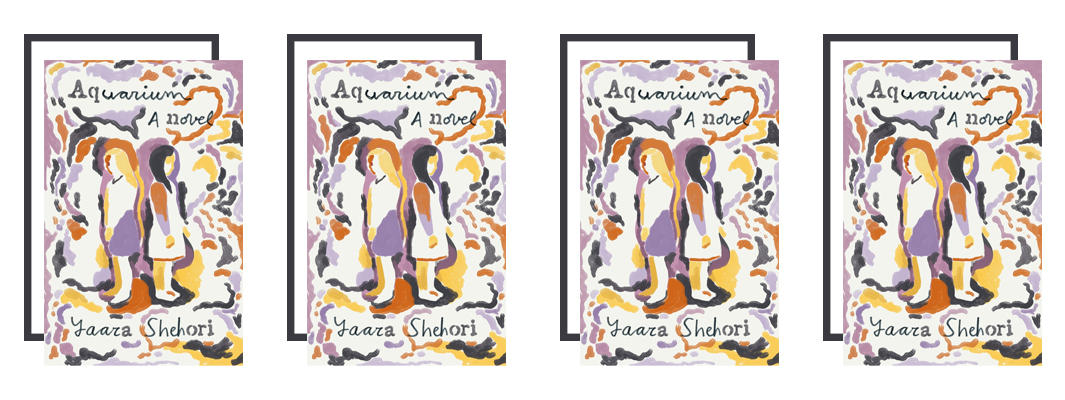
First published in Hebrew in 2017, Aquarium is a fascinating coming-of-age tale of two Deaf sisters finding their way in a hearing world. In a small town in Israel, Dori and Lilli grow up isolated from the outside world. Their parents, Anna and Alex, are also Deaf, and Alex is adamantly opposed to any integration with the hearing world, preferring to homeschool his daughters. The novel is told through the alternating perspectives of Dori and Lilli as they grapple with their childhood and try to make their way in the world. Split up at a young age, for reasons I will not spoil, they struggle to find their way back to each other and make peace with their unorthodox childhood. Both their perspectives are filled with lyrical and evocative passages: “No one remembers childhood as it was, bad and hard and strewn with teeth poking up out of the ground. You forget that childhood is a time with more monsters than heroes.” A powerful story of sisters and broken families.
Read if you’re into: sisterhood, complex families, Deaf stories. Get it here. Note: this book is now coming out in April.
3. Mediocre: The Dangerous Legacy of White Male America by Ijeoma Oluo (December)
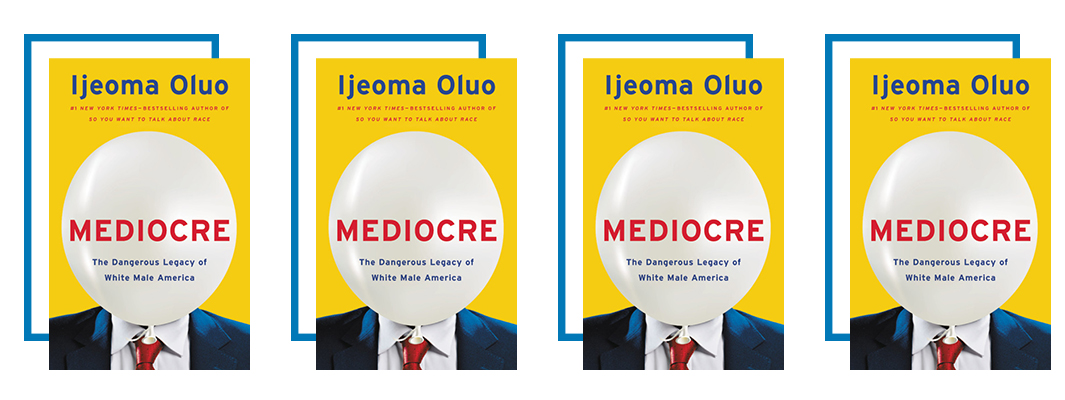
Ijeoma Oluo’s look at the history of white male mediocrity in America feels like it is coming out at the perfect moment. Mediocre is structured as different stories of various “mediocre white men,” through which Oluo paints a vivid portrait of the history of America. Her goal? “I am to draw a portrait of what white male mediocrity in the United States looks like and how it attempts to perpetuate itself — in our education system, our sports teams, our businesses, and our politics… With a clear view of our past, we may then consider trying something new for our future.” She succeeds in unpacking the myriad ways in which this mediocrity has sustained itself for centuries of American history. There were so many passages I underlined and wrote down (“White supremacy is, and has always been, a pyramid scheme,” for example) and I know I will be referencing Oluo’s book for many years to come.
Read if you’re into: understanding America, whiteness, dismantling the patriarchy, etc. Get it here.
4. Rest and Be Thankful by Emma Glass (December)

The protagonist of Rest and Be Thankful is Laura, an overworked and overtired pediatric nurse who works in a NCIU. When she does sleep, she has terrifying dreams. When she is awake, she hallucinates strange figures. Yet, she continues to care for sick babies. Emma Glass, a writer and nurse at a children’s hospital in London, expertly captures not only the trauma of what it’s like to be in the hospital as a patient, but what it is like to work in a hospital and deal with such horror and sickness constantly. Laura’s dread, and burnout, is palpable, but she continues to barrel forward — until the very last page. Essentially, I need you all to read this so we can have an Alma book club to discuss the ending. I’m not joking!!! Someone talk to me about the ending of this book!!
Read if you’re into: dark stories, stories of burnout, books where you’ll get to the last page and gasp. Get it here.
5. Detransition, Baby by Torrey Peters
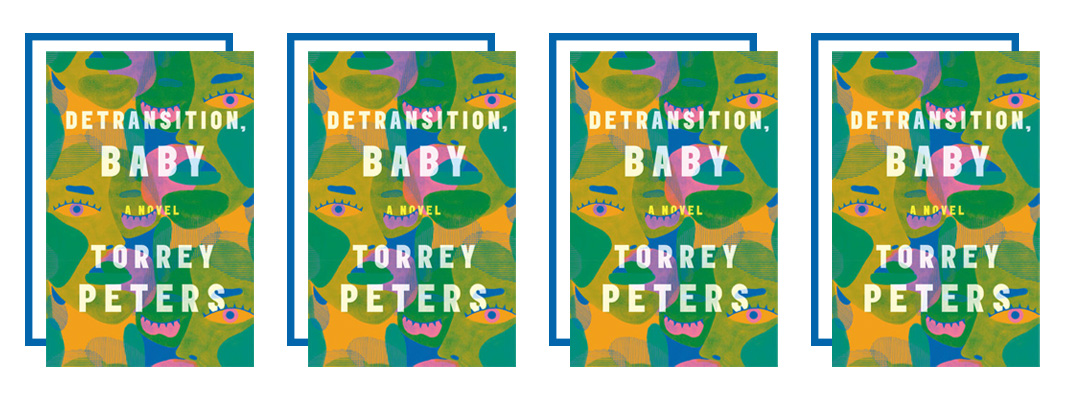
I sat down to read this book and legitimately — I am not being hyperbolic here! — did not look up until I was done. Detransition, Baby is Torrey Peters’ debut novel, and it is a masterpiece. At its heart, it’s the story of three women: Reese, a trans woman who desperately wants to be a mother and self-sabotages by sleeping with married men; Ames, who was Amy, who detransitioned from living as a trans woman; and Katrina, a Chinese Jewish woman who is pregnant with Ames’s baby. Ames proposes that Katrina let Reese raise the baby with them, because he will be unable to fully be present as a parent. Why? “After all the lessons of transition and detransition, fatherhood remained the one affront to his gender that he still couldn’t stomach without a creeping sense of humor.” What results is a moving look at the lives of these three woman — though we get to know Ames and Reese much more than Katrina — and how they come together to possibly co-parent a child. Throughout the book, Peters reflects movingly on how trans women are a “lost generation” because of the lack of elders and stable groups. It’s funny and smart and the characters feel so real you can easily imagine their lives moving forward long after you finish the last page. Can you tell I loved it?
Read if you’re into: as Peters says, “trans feminine culture in the new millennium.” I’ll add: stories of queer families, of finding oneself, and funny-sad-happy stories. Get it here.
6. Outlawed by Anna North (January)

In Anna North’s version of 1849 America, female infertility is against the law. If a woman cannot have a child, she is exiled from her community. Our heroine, Ada, is 17 years old and hasn’t had a baby after a year of marriage. Her mother, a midwife, tells her to escape to a convent before she is executed as a witch; soon, Ada leaves the convent and joins up with the Hole in the Wall Gang, a band of female outlaws. I didn’t even process that Outlawed was an alternative history version of America until I sat down to write this blurb, because it truly, unfortunately, doesn’t seem too far from our reality and history. Ada is a fearless protagonist, and one who is easy to root for as she tries to make her way in a world that is set against her. North’s background as a journalist who covers reproductive rights clearly shines through in Ada’s desire to provide healthcare (including abortions) to women. If you want to read a story of women fighting for a better world, look no further. Perhaps we can all learn something from Ada and the Hole in the Wall Gang.
Read if you’re into: feminist Westerns, full stop. Get it here.
7. Infinite Country by Patricia Engel (Update: moved to March)
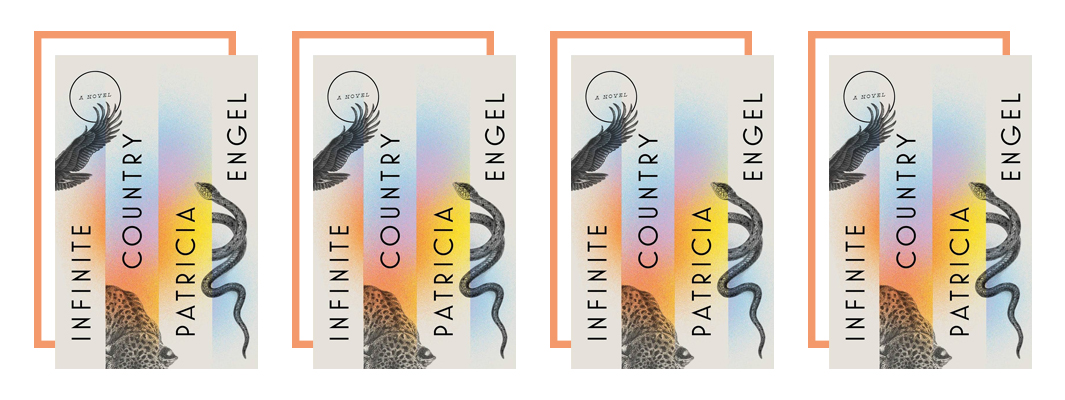
Oh man, this book broke me in the best way possible. Patricia Engel’s Infinite Country is the story of a Colombian couple that leaves Bogotá in search of a better life in the United States. As new parents, Elena and Mauro move to the U.S., but soon, they overstay their visa and attempt to evade deportation. They have two more children in the U.S., making half their family American citizens, but after their third, Talia, is born, Mauro is deported back to Colombia. Elena, now alone and struggling to provide for three children, decides to send Talia back to Bogotá to live with her mother. What follows is the story of all five of them, told through alternating perspectives and in various timelines. If it sounds overwhelming: Fear not, you stay rooted in the story at all times. Engel does a fantastic job of making all their narratives fit together seamlessly.
This sentence at the end of the second chapter really serves as the mission statement for Infinite Country: “People say drugs and alcohol are the greatest and most persuasive narcotics — the elements most likely to ruin a life. They’re wrong. It’s love.” At the heart of Infinite Country is the love of Elena and Mauro, of their family, and of their children trying to make their way. And yes, the ending will absolutely move you to tears.
Read if you’re into: stories of undocumented Americans, families, books that will make you cry. Get it here.
8. Black Buck by Mateo Askaripour (January)
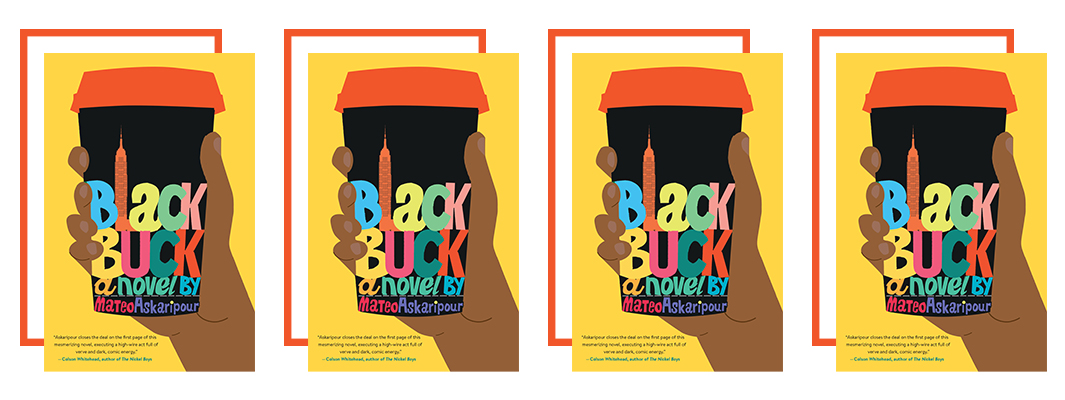
“There’s nothing like a black man on a mission. No, let me revise that. There’s nothing like a black salesman on a mission.” Thus begins Mateo Askaripour’s Black Buck, the story of Darren, who — after convincing one of his Starbucks regulars to try a new drink — gets hired at that regular’s start-up to work in their sales division. Darren, a Black and Latino 22-year-old, is immediately thrown into an all-white tech world full of racism, elitism, and inflated senses of self. They soon nickname him “Buck,” after Starbucks, and he tries to reinvent himself as a super salesman. (The marketing materials compare this book to Black Jewish filmmaker Boots Riley’s Sorry to Bother You, where a young Black telemarketer adopts a white accent to succeed, and while yes, there’s a similar vibe of a Black-man-beating-white-men-at-their-own-game-in-corporate-America, it’s also wholly different.)
What results is a story that is at once an incisive satire of corporate America and tech start-ups, but also a novel with so much heart. I wanted Buck, and his Happy Campers (young people of color he helps mentor to find a way into the corporate world) to actually exist. Plus, Askaripour is funny and there are so many sentences I read, and thought, hot damn: “My heart beat harder than a racist cop in Kentucky.” The structure of the book — Darren (“Buck”) narrating to you, telling you how to be a salesperson — works super well, allowing him to address larger themes such as gentrification, white supremacy, grief, and trying to succeed in a world that wasn’t built for your success. A tall order, but I loved so much about Black Buck, and you will too. Honestly, from that very first sentence, I was in.
Read if you’re into: satire, “Sorry to Bother You,” bringing down corporate America. Get it here.
9. A Certain Hunger by Chelsea G. Summers (December)
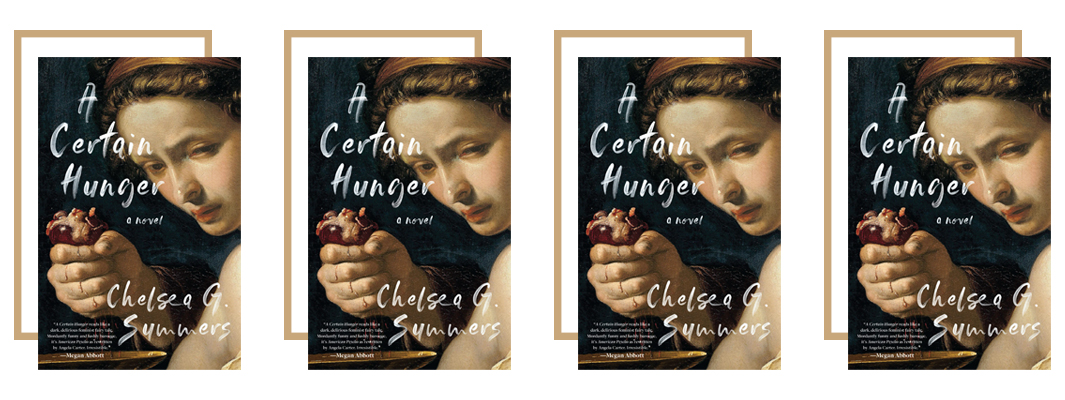
The hero, if you can call her that, of A Certain Hunger is Dorothy, a food critic and food writer who also happens to be a psychopath. Chelsea G. Summers has crafted a wicked tale of a woman who murders her lovers — and then eats them. And while the premise may sound shocking, it’s a compulsively readable novel from start to finish. Structured as a memoir written from prison, Dorothy details her lovers (including Marco, an Italian shochet, AKA kosher butcher), her career as a food writer, and her decision to kill. She’s funny, self-aware, and there are so many lines I wanted to underline, to savor (ha, food/cannibalism puns!) as I read. Dorothy’s direct addresses to the reader will stop you in your tracks: “You and I are the same. You may not admit it aloud, but I know you will read this book and wonder how your lover would taste sautéed with shallots and mushrooms and deglazed with a little red wine. You read, and you wonder, and you know the answer would be delicious.” A Certain Hunger joins a long line of stories narrated by criminals, but this is the first, that I can recall, of a fantastic, nuanced female psychopath. As the TikTok youth would say: “No, I don’t think you understand… I’m obsessed with this.” Seriously: I’m obsessed with this novel, and you will be, too.
Read if you’re into: satire, dark fiction, dark humor. Get it here.
10. Bride of the Sea by Eman Quotah (January)
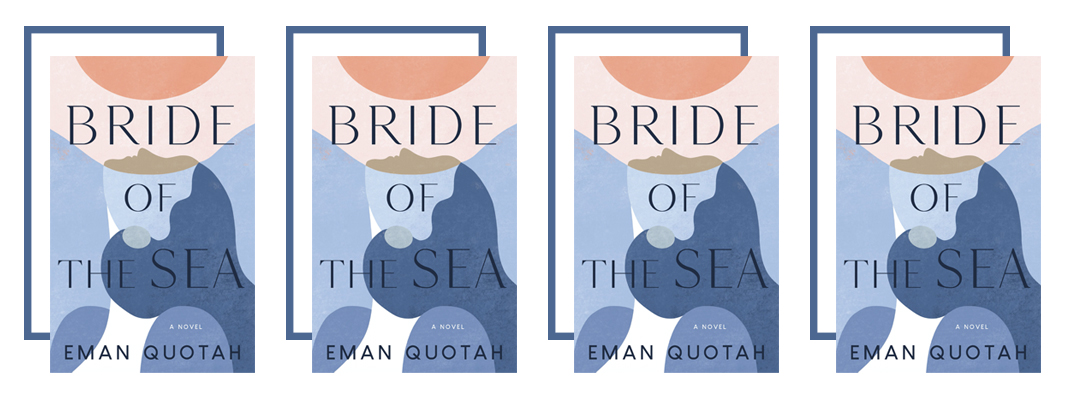
Eman Quotah’s debut novel Bride of the Sea tells the tale of Hanadi, a girl born in America to Saudi Arabian parents. Yet it’s not exactly Hanadi’s story that unfolds; it’s the story of her parents, newlyweds Muneer and Saeedah. Muneer wants to return to Saudi Arabia after he finishes his schooling, whereas Saeedah wants to stay in America. One night, she disappears with Hanadi, and Muneer cannot find them. As Hanadi grows up, Saeedah changes their names to sound more American, and constantly moves them to evade private investigators, all while telling her daughter that her father has died. As Hanadi grows up, she struggles to understand why her mother did what she did. I just love this description from the jacket copy: “How can she exist between parents, between countries? This question lies at the heart of Eman Quotah’s spellbinding debut about colliding cultures, immigration, religion, and family; an intimate portrait of loss and healing, and, ultimately, a testament to the ways we find ourselves inside love, distance, and heartbreak.” If that doesn’t make you want to go read this immediately, I don’t know what will!
Read if you’re into: family dramas, coming-of-age tales, stories of Arab Americans. Get it here.
11. Cheeky: A Head-to-Toe Memoir by Ariella Elovic (December)
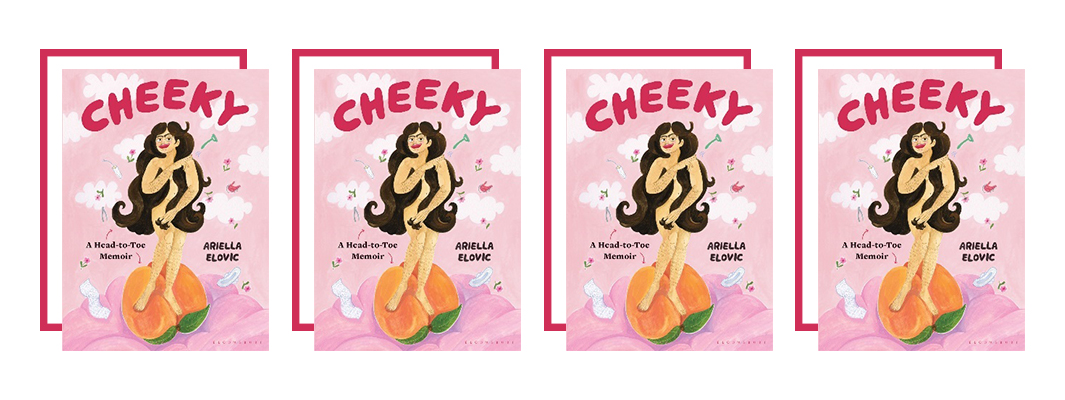
Illustrator Ariella Elovic found a space talking about her body on her Instagram account, @thecheekyblog. In self-portrait comics, she posts about body hair and pooping and periods and everything in-between. And now, her Instagram is in book form in this hilarious and heartfelt graphic memoir. Ariella, who is Jewish, takes us through her relationship with all parts of her body — from her hair down to her feet. Supported by a group of camp friends (“The Yentas”) as well as her sisters, mom, and grandma, Cheeky is a tale of empowerment and loving your body, marketed as the “inspiring antidote to body shame.” For many Jewish readers there will be much to relate to, like shaving your legs at sleepaway camp to how her arm hair makes Elovic feel like “a Semitic goddess.” Reading each chapter feels chatting with a friend about the worst of your insecurities. I simply can’t recommend it enough.
Read if you’re into: frank discussions of the female body! Female friendships! Hairy Jewish women! Get it here.
12. Hades, Argentina by Daniel Loedel (January)
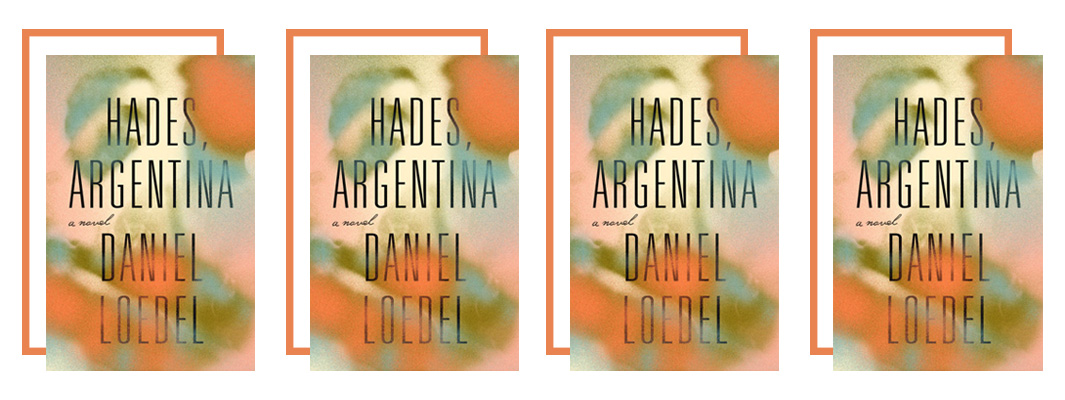
It’s 1986, and our protagonist Tomás Orilla returns to Buenos Aires after nearly a decade gone in New York. Soon, he is enmeshed in his past — literally enmeshed, because Daniel Loedel’s debut is more than just a political/historical novel, but rather a ghost story. Hades, Argentina is about Tomás’s journey to reckon with what happened in 1976, when a coup occurred and a military junta came to power. Thousands of Argentinians were “disappeared,” never to be seen or heard of again. His old friend the Colonel takes Tomás back to the past, entering a sort of Hades: “You know there are no dead in Argentina, Tomás. Only disappeared,” he explains.
So, back to 1976 we go: Tomás, a Jewish med student, is not involved in politics — but when he falls back with his childhood crush, Isabel, he gets wrapped up in her world (she’s involved with the Montoneros, a leftist urban guerrilla group), and she pushes him to get involved in work that makes him question his morals and who he is. The book goes in and out of the past, and leaves you constantly questioning what is actually happening (in a good way). It’s a gorgeously told tale of really tough subjects — terror, betrayal, love, and more — and gives you a portrait of how awful it is to live under dictatorship. Loedel writes that this novel is inspired by his half-sister, Isabel Loedel Maiztegui, a Montonera who was disappeared on January 17, 1978 at the age of 22. May her memory be a blessing.
Read if you’re into: historical fiction combined with magical realism. Get it here.
13. We Run the Tides by Vendela Vida (February)
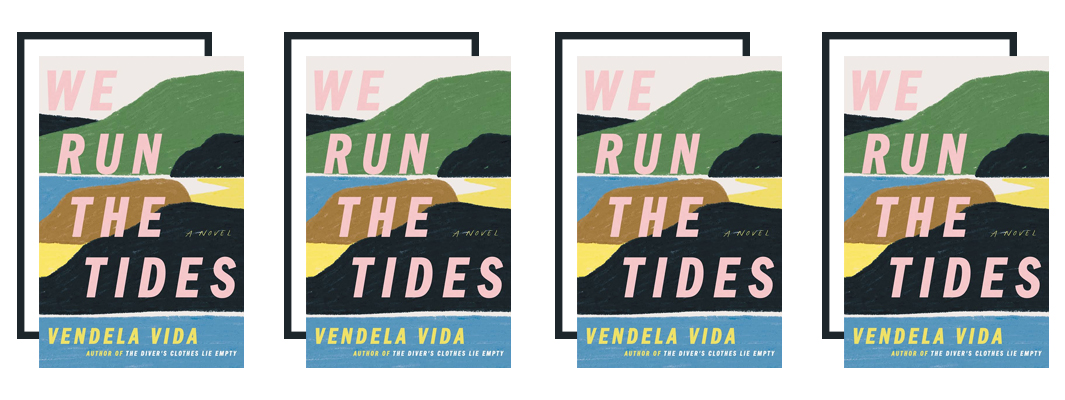
It’s 1984, and teenage girls Eulabee and Maria Fabiola live in the exclusive San Francisco neighborhood of Sea Cliff. “Separately we are good girls. We behave. Together, some strange alchemy occurs and we are trouble,” narrates Eulabee. Every day, they walk to school together. One morning, a man pulls up next to them as they walk; Maria and two of their other friends swear they saw him masturbate, whereas Eulabee isn’t so sure. A few weeks later, Maria disappears, and her potential kidnapping shocks the Sea Cliff community. I won’t spoil much more, because it is best read not knowing what’s coming, but Vendela Vida crafts a tense tale of girlhood, privilege, and innocence.
Read if you’re into: mysteries, coming-of-age stories, San Francisco. Get it here.
14. The Absolute Book by Elizabeth Knox (February)
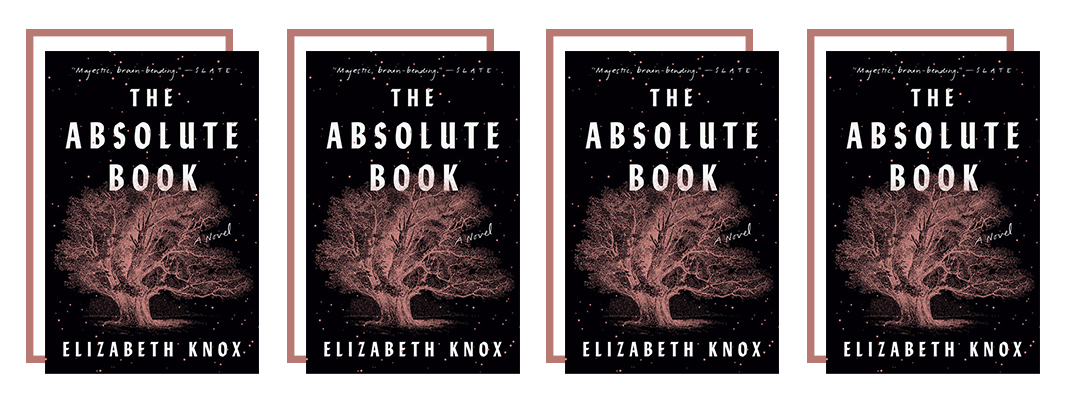
What feels like lifetimes ago, Slate published a review headlined “This New Zealand Fantasy Masterpiece Needs to Be Published in America, Like, Now.” In it, writer Dan Kois lavished praise on a New Zealand epic by Elizabeth Knox, and then, in an update two weeks after publication, wrote that the book was finally sold to an American publisher. And so, The Absolute Book is coming to America. The novel — epic in scope — is the story of Taryn Cornick, sidhe (fairy folk based on Irish mythology), gates between worlds, a “Torah above Torahs” (I can’t even begin to explain), and so much more. The basic plot is that Taryn’s sister, Bea, was murdered when they were teens. Years later, she is involved in a revenge scheme, which leads to a detective showing up to question her about the cold case. This spirals quickly out of control; Taryn and the detective are met by a man (or is he a man!?) simply known as “Shift.” I’m not going to even attempt to summarize the plot, but please know if you are the type of person who loves to be absorbed in fantasy worlds that have a quest, a mystery, a race against time… you know who you are. This is for you.
Read if you’re into: contemporary, epic fantasy. Get it here.
15. Love Is an Ex-Country by Randa Jarrar (February)
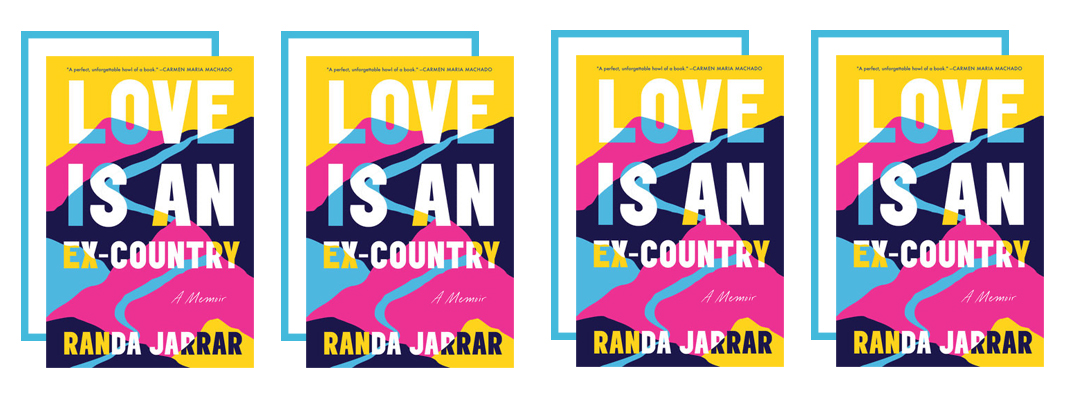
This happened to be the book I read on Election Day, and it couldn’t have been a better decision. Egyptian, Palestinian, and American writer Randa Jarrar’s memoir is framed through the story of a road trip she took ahead of the 2016 election, inspired by Egyptian dancer and actress Tahia Carioca. Hers is at once an American story and the story of the Palestinian diaspora. Jarrar writes about heavy topics — domestic assault, detainment in Israel, doxxing, and more — yet her writing remains infused with joy and survival. Towards the end, she goes into an exploration of her sexuality and kink, and you end the memoir knowing Jarrar is going to be okay.
Read if you’re into: stories of queerness, Arab identity, and survival. Get it here.
16. A Swim in a Pond in the Rain by George Saunders (January)
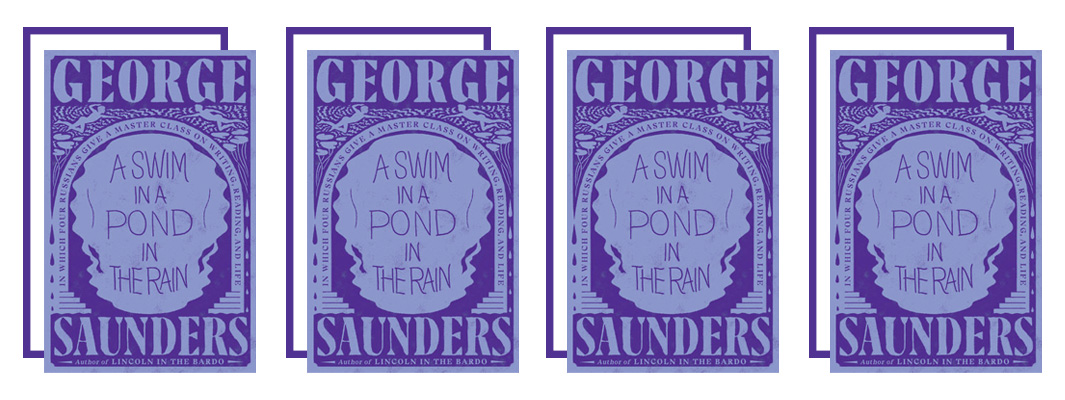
When I was a freshman in college, I took a course on Russian short stories. (Technically called “Short Fiction: Russia & The West,” though it was taught by a Russian professor so it was mainly Russian short fiction.) There were only eight of us in the class; I kissed one of my classmates one night and it got awkward real fast. All of this is to say I don’t remember too much from the course besides “The Metamorphosis” by Franz Kafka (not Russian) and “The Overcoat” by Nikolai Gogol (Russian) and I am pretty sure we also read Dubliners by James Joyce (not Russian, famously Irish, seriously it’s right in the title of the book). Anyway, George Saunders’s A Swim in a Pond in the Rain serves as my second round of Russian short story education, nearly a decade later. And it’s marvelous. The book is half analysis of short stories, half instruction on how to write short stories, and another half Saunders reflecting on writing, reading, and Russian authors. (Yes that’s three halves, I studied history, not math, I don’t care.) There are six stories, printed alongside Saunders’s analyzation, by four different authors: Leo Tolstoy, Anton Chekov, Ivan Turgenev, and Nikolai Gogol.
“It may be possible that, when all is said and done, that’s what we’re really looking for — in a sentence, in a story, in a book: joy (overflow, ecstasy, intensity),” Saunders writes. “An acknowledgement, in the prose, that all of this is too big to be spoken of, but also that death begins the moment we give up on trying to speak of it.” If you’re someone who loves reading, and the joy of reading, this is absolutely the book for you.
Read if you’re into: thinking about stories and what makes us turn the page. Also, Russian short stories!! Get it here.
17. The Echo Wife by Sarah Gailey (February)
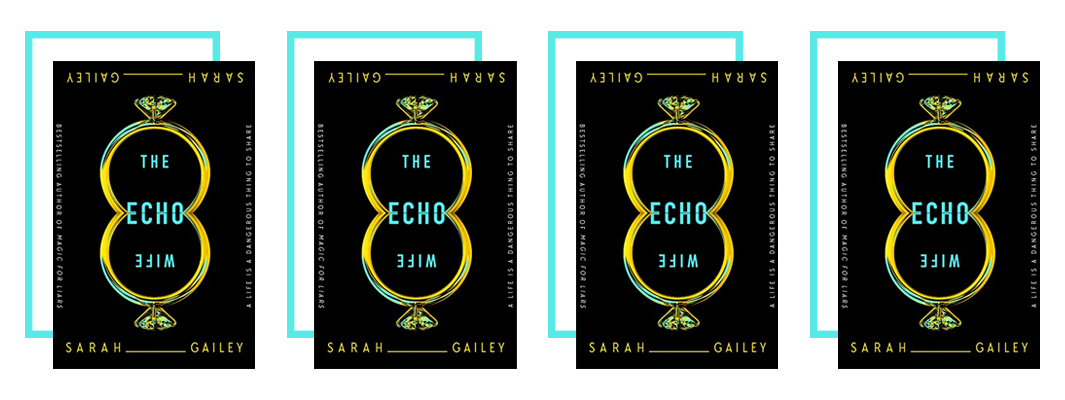
What happens when your husband leaves you for… you? That’s the rough plot of Sarah Gailey’s The Echo Wife, where Evelyn’s husband Nathan leaves her for a clone of Evelyn that he named “Martine.” Evelyn, an award winning scientist who pioneered a way to create adult clones, is devastated that Nathan not only stole from her, but cloned her. If news of it gets out, her career will be ruined. But soon, Martine calls Evelyn in distress — and needs her help. I won’t spoil it for you, so I have to keep this blurb very brief, but Gailey has plotted a tense thriller with some shocking twists and turns. And even though the plot centers on clones, the actions of the characters are all rooted in real, human emotion and ethical dilemmas.
Read if you’re into: sci-fi with ethical/moral dilemmas, thrillers. Get it here.
18. Beyond the Synagogue: Jewish Nostalgia as Religious Practice by Rachel B. Gross (January)
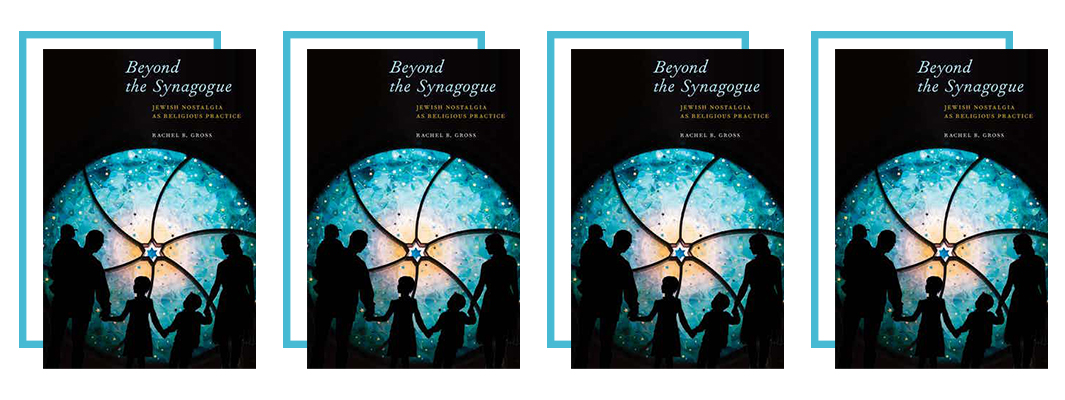
I love following Rachel B. Gross on Twitter, so when she shared her book promo with the teaser, “Come for the genealogy, synagogues as museums, picture books, and artisanal delis, and stay for the argument about U.S. Jews and religion,” I was obviously immediately in. Beyond the Synagogue is an academic book, but it’s definitely readable to a non-academic audience. Gross’s main argument, as she writes in the introduction, is that “American Jews participate in a broad array of ostensibly nonreligious activities—including visiting Jewish historic sites, conducting genealogical research, purchasing books and toys that teach Jewish nostalgia to children, and seeking out traditional Jewish foods—that are properly understood as religious.” There are five chapters, each focusing on a specific aspect of Jewish nostalgia, outlining how each functions as meaning in the American Jewish landscape. Essentially, Gross seeks to expand how we understand the practice of American Judaism to include Jewish nostalgia, and argues that any notions of American Jewish religiosity being in “decline” are false; it’s rather how we understand American Judaism that needs to be expanded.
Read if you’re into: American Judaism, le duh. Get it here.
19. Dog Flowers by Danielle Geller (January)
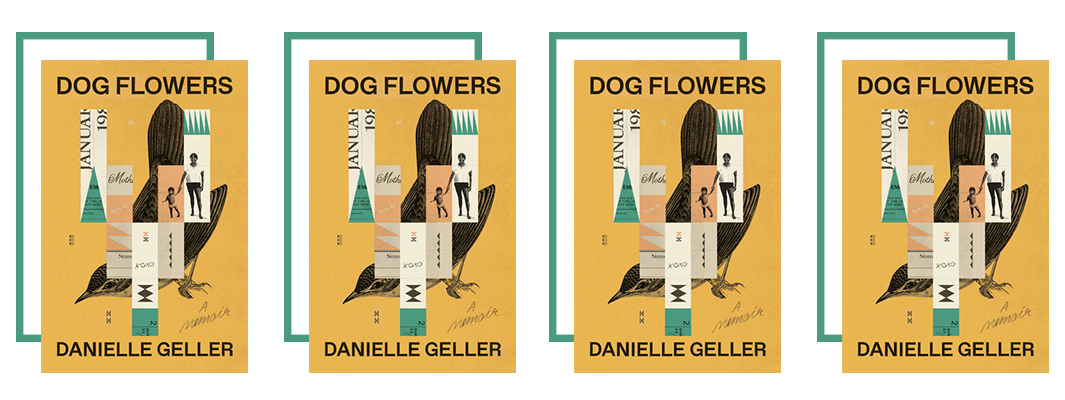
“My words feel inadequate,” Danielle Geller writes towards the end of her memoir. “I had never felt that kind of love, but I have never learned to write about happiness.” Geller’s heartbreaking memoir, Dog Flowers, is not very happy — it’s the story of a childhood with two parents who struggled with substance abuse, a mother who left, and a sister who grew up to be more like their parents than unlike them. Geller, a member of Navajo nation, writes movingly about Native identity, sisterhood, grief, and trying to get out from under the shadow of her troubled parents.
The story begins with Geller’s mother dying and Geller gathering up what she left behind — including what she movingly calls her mother’s archive. This archival material is woven throughout the text; she studied library science and uses this training to label and classify the photos. As Geller explains in an interview, “My mother’s archive was a collection of documents that might have informational value, in part because women like her aren’t often found in archives.” Geller ends up returning to Navajo Nation to reconnect with her aunt, cousins, and grandmothers. Just like her mother’s archive is not something easily found in the archives of this country, stories like Geller’s are not often found in our literary landscape, which is why I am so grateful for this memoir, and hopefully many more works to come from her in the future.
Read if you’re into: memoirs, stories that incorporate visual elements, Indigenous narratives. Get it here.
20. The Inland Sea by Madeleine Watts (January)
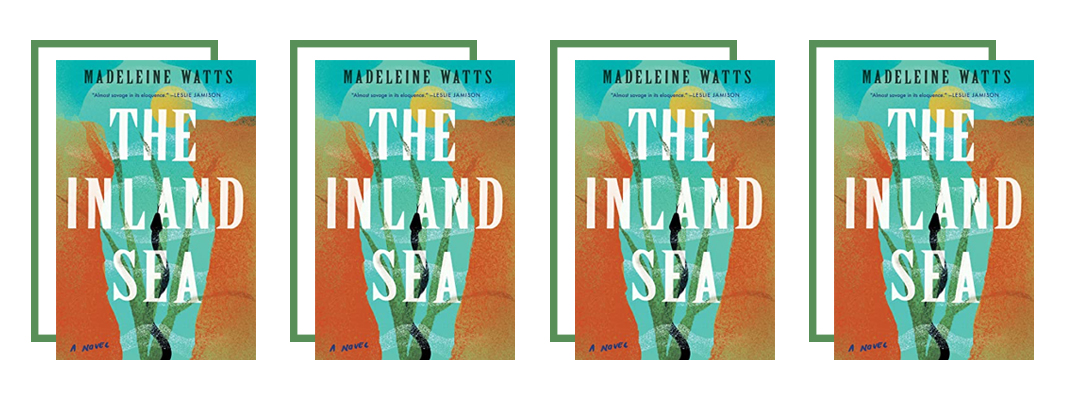
The Inland Sea is the story of the unraveling of a woman, undone by the violence of the world around her. It’s not an easy read. The protagonist, a young Australian woman, is working part-time as an emergency dispatch operator who hears all types of crises, every single day. Combined with what has happened to her in the past — and her mother’s past — she can barely handle working as an operator. Yet, she keeps showing up for her shifts. Throughout, we also learn the story of a British man named John Oxley who traveled to central Australia in search of water (the titular inland sea). Oxley’s great-great-great-great-granddaughter is our narrator, and she also seems to be on a fruitless search for meaning. The Inland Sea is a slow burn of a self-destructive woman struggling to make it through.
Read if you’re into: a story that grapples with everyday violence against women. Get it here.
21. The Blade Between by Sam J. Miller (December)

Sam J. Miller’s fourth novel is set in Hudson, a town in upstate New York. One day, Ronan Szepessy, a gay photographer who grew up in Hudson and vowed never to return, finds himself on a train north from New York City, ending up in, you guessed it, Hudson. He doesn’t remember how he made the decision to get on the train. Soon, Ronan connects with two people he grew up with: Dom, now a police detective, and Attalah, Dom’s wife who is leading efforts to stop real estate developers from making the town too costly and unlivable for its current residents. There’s something supernatural lurking under (or above…) the surface, connected to Hudson’s history as a whaling town. The plot builds slowly, then gets violent, fast. Miller expertly addresses the dark sides of gentrification; perhaps it’s personal for him — like his protagonist Ronan, he grew up in Hudson, and like Ronan’s family, his family ran a butcher shop. As he explains in an interview: “The town butcher knows ALL the gossip, and cutting meat alongside my father was where I first learned that everyone has a fascinating story to tell.” It clearly shows; all the characters in The Blade Between are three-dimensional (even the “villain”). Booklist has a lovely sentence in their review I want to include here: “Highly recommended for anyone looking for a queer-themed, sea salt–laced dark fantasy.” Hell yeah.
Read if you’re into: horror!!! Also suspense! And crime! And more importantly, musings on gentrification. Get it here.
22. Fake Accounts by Lauren Oyler (February)
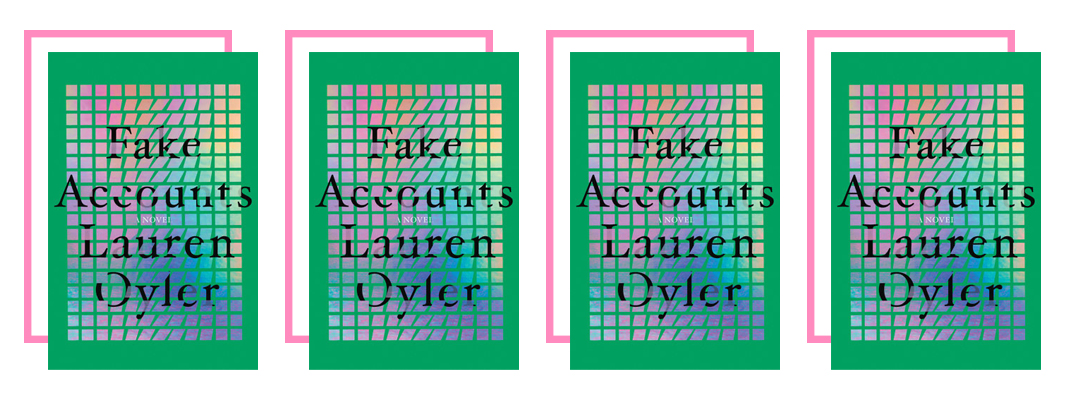
Lauren Oyler’s Fake Accounts is a delicious commentary on the internet and social media and a compelling story of a woman struggling to find her way. The plot begins in January 2017, when Donald Trump is about to be inaugurated as the 44th U.S. president. A woman, suspicious her boyfriend Felix is cheating on her, decides to snoop through his phone. She doesn’t find any lovers — rather, she finds he runs an anonymous conspiracy Instagram account. She knows he doesn’t believe what he’s posting, yet she’s disgusted by it. She plans to break up with him when the weekend’s over. But first, thanks to general peer pressure, she decides to go to the Women’s March in D.C. While there, Felix’s mom calls her to tell her Felix has died. Soon, she quits her job and decides to live where she and Felix met: Berlin. What results is a funny, dark look into how we present ourselves — both online and in real life — and how we search for connection.
The narrator is an excellent liar, yet you feel like she is telling you the truth because of Oyler’s smart prose, which is often directed to you, the reader. For example, I loved this sentence from the start of the book: “Knowing what happens next (you’re about to find out), and how he ended up performing as a boyfriend (you know some of this and will learn more), and what happens after that (this would be the conspiracy-theory thing, which you also know), and what happens after that (truly unbelievable, though in some ways not; you do not know this yet, unless you’re one of the people I’ve discussed it with), I would like to deny that I liked him very much at this point.” There’s so much there! I love it!!
Read if you’re into: thinking about manipulation, dating, social media, expats, and so much more. Get it here.
23. Mike Nichols: A Life by Mark Harris (February)

“In the origin story that Mike Nichols liked to tell, he was born at the age of seven. The first image of himself he chose to conjure for the people was that of a boy on a boat, holding his younger brother’s hand, traveling from Germany to America.” WHAT an opening to a biography of Jewish actor, director, and producer Mike Nichols (born Michael Igor Peschkowsky in Germany in 1931). Mark Harris quotes Nichols saying, “A Jew in Nazi German, parents always fighting. Aren’t all childhoods bad?” And that sets us up for a compelling, page-turning biography of a figure who loomed large in Hollywood, teaming up with Elaine May on Broadway, directing classics like The Graduate and Who’s Afraid of Virginia Woolf?, and winning a spate of Tony Awards for directing plays. The ways in which Harris is able to adeptly weave together both Nichols’s life story and his work is impressive, and he conducted over 250 interviews — with stars like Elaine May, Meryl Streep, and Natalie Portman — to present this comprehensive portrait of a man who shaped modern pop culture.
Read if you’re into: biographies, baby!!! Also Hollywood, immigrant stories, Jewish American identity… you know the deal. Get it here.
24. Four Hundred Souls: A Community History of African America, 1619-2019 edited by Ibram X. Kendi & Keisha N. Blain (February)
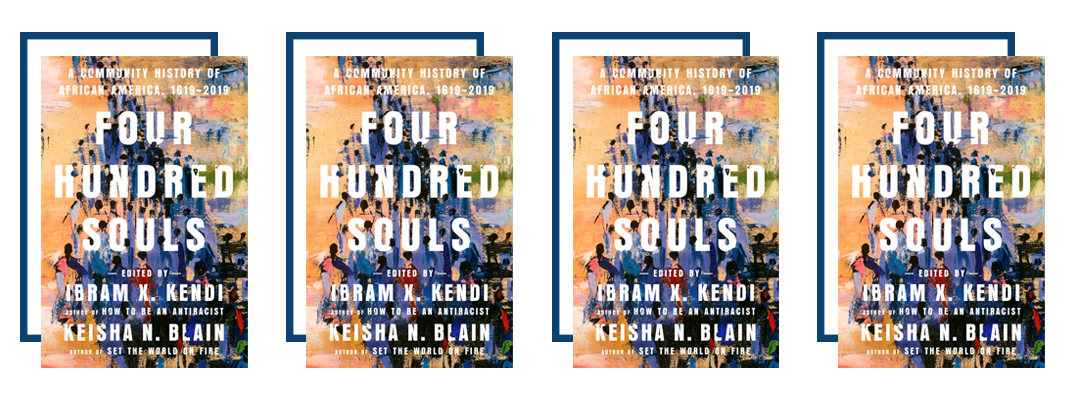
I can’t sum this book up better than the description: “A chorus of extraordinary voices comes together to tell one of history’s great epics: the four-hundred-year journey of African Americans from 1619 to the present.” Edited by Ibram X. Kendi and Keisha N. Blain, this collection takes 80 (!!!) writers and 10 poets to tell the tale of African American history — a true community history. Each writer takes on a five-year span and chooses their own format (historical essay to short story to everything in-between). By choosing 90 different writers, it “fundamentally deconstructs the idea that Africans in America are a monolith” (just like Black Jews are not a monolith!), and presents the wide range of lived experiences in this country. I read slowly (as of the publication of this list, I am actually still reading it, hi!), wanting to take my time to learn from every single section. The first five years, 1619 to 1624, are written by Nikole Hannah-Jones, the creator of The 1619 Project. The last five years in this volume (it goes to 2019) are 2014-2019, written by Alicia Garza, a Black Jewish woman who cofounded the Black Lives Matter movement.
Read if you’re into: history, America, narratives of Black experience. Get it here.
25. Everybody (Else) Is Perfect by Gabrielle Korn (January)
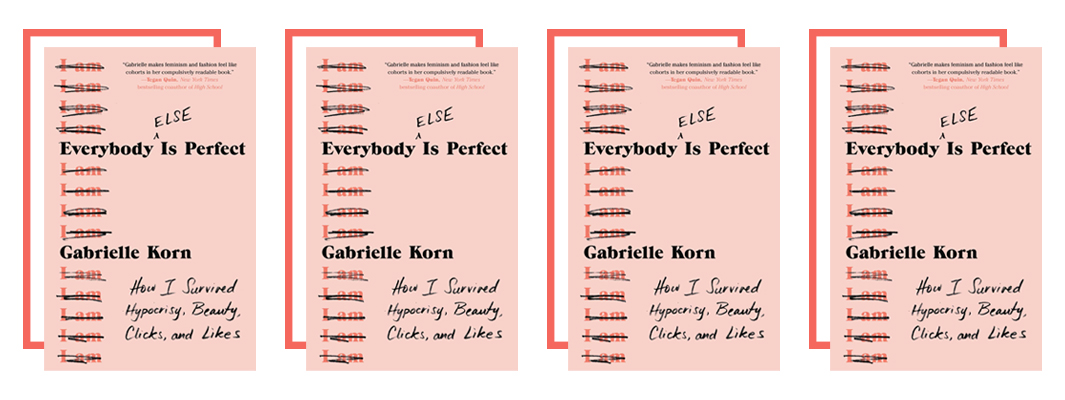
When she was 28, Gabrielle Korn was promoted to editor-in-chief of Nylon magazine, the same day the print edition of the magazine folded. She served as EIC for two years, being the first out lesbian woman on the top of the masthead, and was “younger and gayer than all the female EICs at competing publications in New York City.” Her memoir, Everybody (Else) Is Perfect, is the story of her journey in media, but also of her own journey to find herself as a person. Throughout, she opens up about her struggles with disordered eating, which I found to be the most powerful parts of the memoir. Korn is open about her pushes for diversity in media, recognizing where her work fell short: “Despite my queerness,” she writes, “I was just another one of them. I understood that as a white Jewish lesbian, the parts of my identity that might marginalize me were largely invisible; I was benefitting from the system while being tokenized by it.” If you’re someone (like me! hi again!) who works in the digital media space, or if you’re someone who is fighting for their industry to be better, don’t miss this.
Read if you’re into: women in media, memoirs, frank discussions of disordered eating. Get it here.
26. Milk Blood Heat by Dantiel W. Moniz (February)
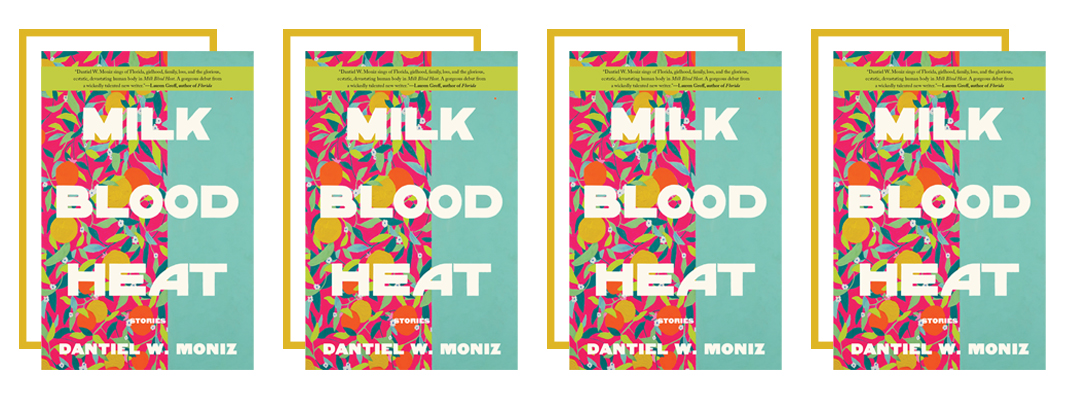
Dantiel W. Moniz’s debut short story collection Milk Blood Heat is set in Florida. Each story, the jacket copy tells us, is about the ordinary worlds of “young girls, women, and men who find themselves confronted by extraordinary moments of violent personal reckoning.” My favorite story is “Necessary Bodies,” about a young woman named Billie living in Jacksonville whose mother is about to celebrate her 50th birthday. It’s filled with details that Moniz excels at: “Late at night, while waiting for Liam, Billie searched random things: ‘how many years FL underwater’ and ‘when will the sun go out’; intergenerational trauma and its biological effects; an article in the Florida Times where they interviewed the grand dragon of the local chapter of the Ku Klux Klan about his renewed recruitment efforts while sipping sweet tea in his home; how to make homemade, organic pizza rolls….” Each story is filled with such vivid detail and a clear sense of character; you’ll never want them to run out.
Read if you’re into: short stories, stories about grief, stories about women. Get it here.
27. The Divines by Ellie Eaton
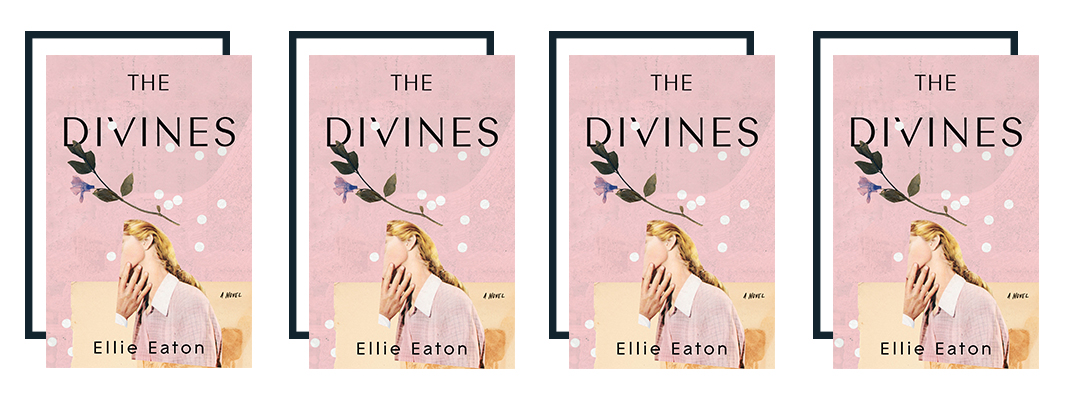
Ellie Eaton’s debut is the tale of a terrible year at a posh English boarding school — and the lasting repercussions for our protagonist, Josephine. Josephine, who reinvented herself and now goes by “Sephine,” thinks she has left her past at an all-girls boarding school behind her. That is, until she is on her honeymoon, and she and her husband Jürgen drive by the school where a local woman calls her the c-word. Soon, she tries to tell Jürgen about her experience at the school, but cannot put into words the magnetic pull it still has on her decades later. The Divines is structured between a recounting of her last year at the school, building up to something awful that happened with her roommate, and Josephine’s present-day life with Jürgen in Los Angeles. While the present day chapters move fast — moving quickly through a honeymoon, attempts to get pregnant, having a 2-year-old, etc. — the core of the novel smartly focuses on her time in school and all the terrible things that come with being a teenage girl. Josephine’s relationship with Lauren, a “townie,” is the most compelling part of the ’90s chapters. All in all, The Divines is a well-told story that hurtles towards a strangely satisfying conclusion.
Read if you’re into: stories about the awfulness of teenage girls. You know what I mean. Get it here.
28. How to Order the Universe by María José Ferrada (trans. Elizabeth Bryer) (February)
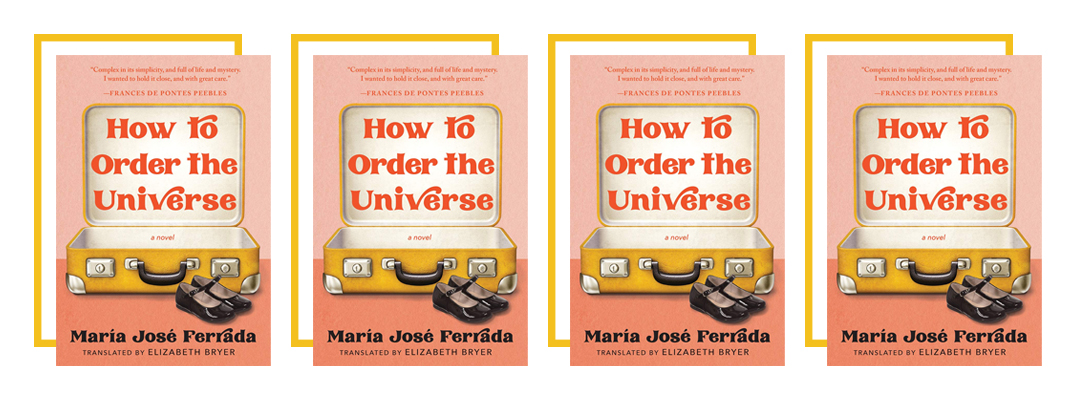
How to Order the Universe tells the tale of M, a 7-year-old girl who starts joining her father, D, as he works as a traveling salesman. He travels from town to town selling hardware supplies, and she tries to make sense of the universe through the lens of D’s trade. But living in Chile, under the dictatorship of Augusto Pinochet, sometimes there is just no order. M is very direct and has a wise-beyond-her-years sense (“Approaching eight years of age, I had discovered that, while D was nothing special as a father, he made an excellent employer.”) My favorite part of this short novel was M’s conception of a “black-hole feeling,” which she defines as “a sadness that, even though you feel it, doesn’t belong to you.” Ferrada’s background is in writing books for children — her most famous is perhaps Niños, dedicated to children who disappeared under the Pinochet dictatorship — yet How to Order the Universe never feels childish. She treats her child protagonist with respect and understanding. In an interview, Ferrada explains that she likes writing for children because “I love being able to talk with the boys and girls I visit in schools. I learn a lot from the way they see the world, without the prejudices that we adults have, as if they were seeing it for the first time.” That worldview couldn’t be more clear in this novel.
Read if you’re into: short, moving novels. Get it here.
29. The Removed by Brandon Hobson (February)
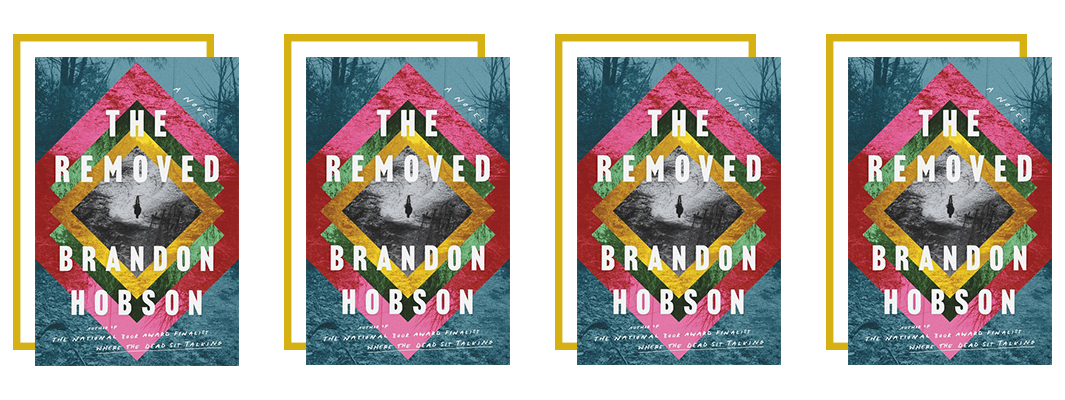
I’m really anti-spoilers in these book previews, or I try to be as best as possible, so here’s a little taste of The Removed because this book is best read going into it knowing very little: Ray-Ray Echota, a 15-year-old teenage boy, is killed in a police shooting. Now it’s 15 years later and his family — parents Maria (a retired social worker) and Ernest (dealing with the onset of Alzheimer’s) and siblings Sonja and Edgar — remain devastated, all coping/not coping in different ways. The family belongs to Cherokee Nation, like author Brandon Hobson, and September 6 is a Cherokee National Holiday commemorating the 1839 signing of the Cherokee Nation Constitution in 1839. September 6 is also the day Ray-Ray was killed. So each year, the Echota family comes together, builds a bonfire, and shares memories about Ray-Ray. “How do you lose a child to gun violence and expect to return to a normal way of life?” Maria asks in her opening narration. Spoiler: You don’t. Set over the course of six days — leading up to the September 6 anniversary — each member of the Echota family “feels a strange blurring of the boundary between normal life and the spirit world.” Plus, Hobson interweaves narration from a character named Tsala, who was a Cherokee leader in the 1830s, and Tsala’s narration includes Cherokee folkore and legends. You’ll be sucked right in, and you won’t be able to put it down.
Read if you’re into: stories about grief, understanding trauma, and fiction that draws from folklore. Get it here.
30. The Prophets by Robert Jones, Jr. (January)

Last but certainly not least in this winter book preview is The Prophets, a debut that pulls a structure from the Bible to tell an epic tale of Black queerness. Author Robert Jones, Jr. tweets and blogs under the handle @SonofBaldwin. With The Prophets, it is clear he is following in James Baldwin’s literary footsteps. (Incidentally, a quote widely attributed to Baldwin was actually tweeted by Jones: “We can disagree and still love each other unless your disagreement is rooted in my oppression and denial of my humanity and right to exist.”) But let’s discuss The Prophets: It’s the story of Samuel and Isaiah, two enslaved teens living on a plantation in Mississippi who, despite the hopelessness and terror and evil that surrounds them, love each other.
As it takes place in the deep South during slavery, the specter of violence hangs over every page, and I read in anticipation of something terrible happening — yet beauty and love still exist during the terror: “Isaiah exhaled. He wondered what he and Samuel could have been, would have been, if they hadn’t come of age in chains.” I am in awe of Jones’s talent for conjuring up this plantation world, a horror in our not-too-distant past. The story of Isaiah and Samuel (which are not their real names) is told through multiple angles: Jones places you in the minds of all his characters, like the other enslaved people living on the plantation and the plantation owner and his wife, and even crosses the ocean to tell a tale of King Aksua, a woman who was king of a tribe in Africa. Jones notes at the start that he wrote The Prophets “for the ancestors who were wiped from the record, who spoke to me when I almost didn’t listen,” and it is clear his goal: to tell the tale of Black queer people who lived in history. And what a magnificent story it is.
Read if you’re into: books everyone will be talking about. Also, Black queer stories, historical fiction, American history. Get it here.
Happy reading, happy winter, and may 2021 bring us all good health — and good books.
Disclosure: This post contains affiliate links, which means we may receive a commission if you click a link and purchase something that we have linked to. While clicking these links won’t cost you any extra money, they will help us keep this site up and running. Thanks!
